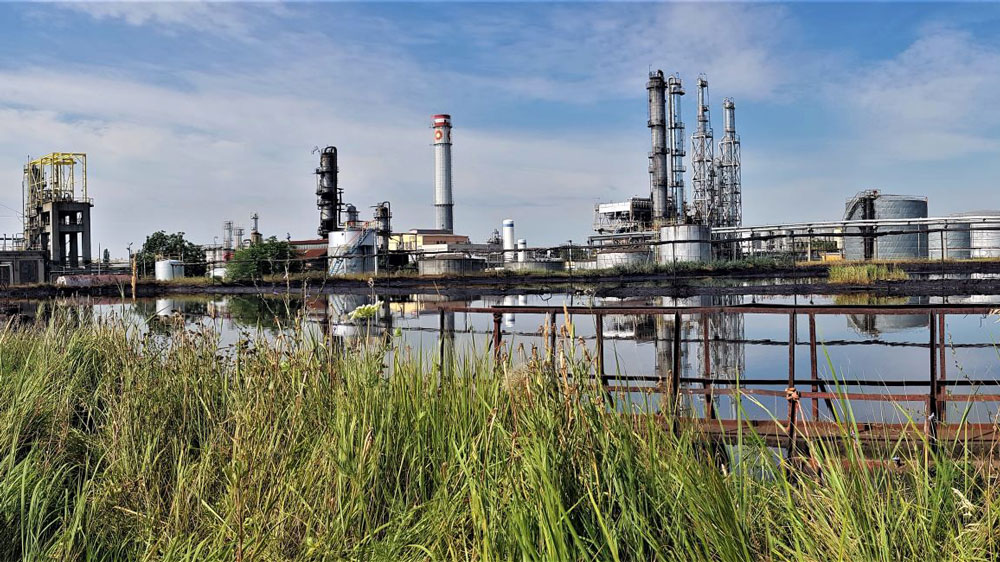Greening of the Historical Settling Lagoons from Vega Refinery
Rompetrol Rafinare announces the continuation of the program for remediation and greening of the historical lagoons of Vega Ploiesti Refinery and the transition to the most important stage – the neutralization and effective disposal of acid tar and oil residues. The deadline for completion is forecasted for 2022, the investment effort amounting to several tens of millions USD.
“It is an important project for Rompetrol Rafinare and its majority shareholder – KMG International and demonstrates our commitment to continuously reducing the impact of our activities and operations on the environment and on the health of local communities, as well as efforts to align with the most demanding provisions of national and EU legislation in the field. The achievement of this comprehensive program implies not only the allotment of extraordinary financial resources, but also the adoption of the best available technologies, the most rigorous safety measures and permanent cooperation with all those involved,” states Yedil Utekov, General Manager of Rompetrol Rafinare.
The lagoons reflect the evolution of the refining industry over 160 years, acid tars and petroleum residues being produced and stored overwhelmingly in the period before the privatization of Vega Ploiesti Refinery (1905-1999).
At the time of the privatization – 1999, the amount of waste that the future shareholder was to take over for greening was estimated at approx. 62,000 tons, afterwards being notified that the existing volume in lagoons is at least 4 times bigger. Up to now, over 80,000 tons have been removed, with associated costs rising to about USD 17.4 million.
The actual stage of the project implies two main trends: treating tars and transforming them into solid waste that will be stored on site without endangering health and environment, as well as recovery through co-incineration in authorized plants (cement factories). These tars have different physicochemical properties and characteristics, such as acidity or density, the differences being generated by the crude oil processing methods used in the past, as well as the refined products obtained.
The treatment of these tars implies solutions adapted to their stabilization and neutralization. For stabilization, internationally certified professional binders, such as those used in civil engineering and those used to stabilize soils in motorway construction, will be used.
To protect the local communities in Blejoi and Tantareni, the refinery developed and implemented a comprehensive program of measures, including the creation of a green curtain around the historical lagoons, constant monitoring of the groundwater through more than 20 drillings, the installation of air monitoring stations, the installation of soundproofing panels for noise reduction, industrial exhausters/’suction apparatuses’ for retaining gas and dust, dusting stations, as well as washing machines and vehicles, the use of water curtains for particle retention.
Operations will be monitored by on-line measurements of environmental parameters and by perimeter measurements to comply with the maximum noise limits permitted by law. In addition, the refinery will mount in the next period an electronic display panel at its perimeter boundary, which will provide real-time environmental data to those interested.
For the supply with the necessary products as well as for evacuation to the authorized points of valorisation of the treated tars, a dedicated access path was established to DN1B – Ploiesti belt. The route was chosen and agreed with the local authorities, in order to reduce the impact on residential areas.
In the first phase, daily traffic is estimated at about 5 trucks, which will vary, depending on the volume and necessity of the products/materials. The approved work schedule for settling tanks’ remedial operations is from Monday to Friday, 10 hours a day, with an hour of pause.
“With the support of the local communities and of the relevant authorities, we want to successfully complete this this ample environmental project – one of the largest in Romania. A major criterion for the choice of the technological solution was its sustainability, with the company planning to monitor the area and water sources for 30 years after the completion of the works,” adds Yedil Utekov.
The disposal of historic acid tar is not the only environmental investment in progress for the Vega refinery. This year, KMG International is investing around 8 million USD to keep the Vega Refinery at the highest standards of quality, environment and safety for employees and Ploiesti.
With a processing capacity of about 400,000 tons/year, the plant in Ploiesti works in perfect synergy with the Petromidia Navodari refinery, which ensures the raw materials/semi-products needed to obtain products and special solutions (ecological solvents, specialty bitumen, ecological fuels for heating, other dedicated products – white-spirit, n-hexane etc.).
Currently, Rompetrol Rafinare operates Petromidia Navodari – the largest refinery in Romania and one of the most complex and modern ones within the Black Sea region, Vega Ploiesti – the oldest working refinery (1905) and the only internal producer of bitumen and hexane, but also the petrochemical division – the sole producer of polymers.
The company is mainly owned by KMG International (54.63%; directly and indirectly) and the Romanian State, through the Ministry of Energy (44.69%)
Source: Rompetrol Rafinare press release







